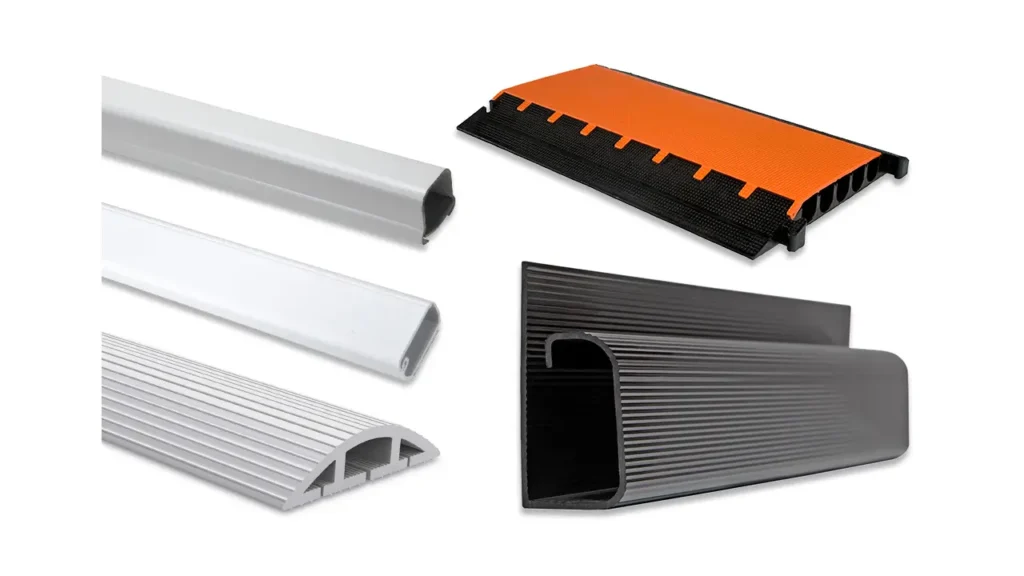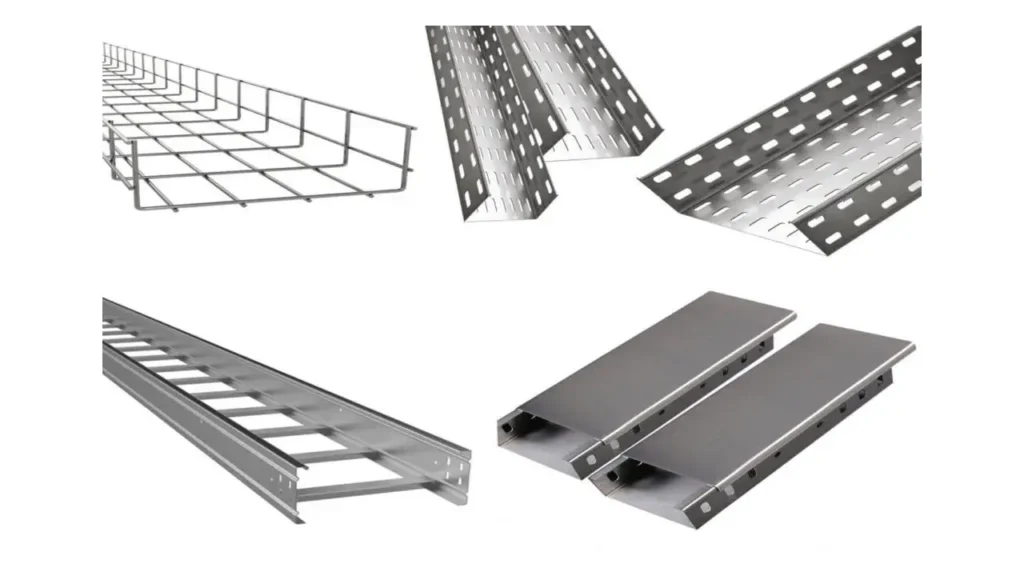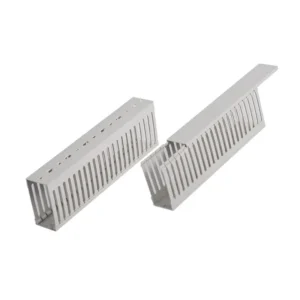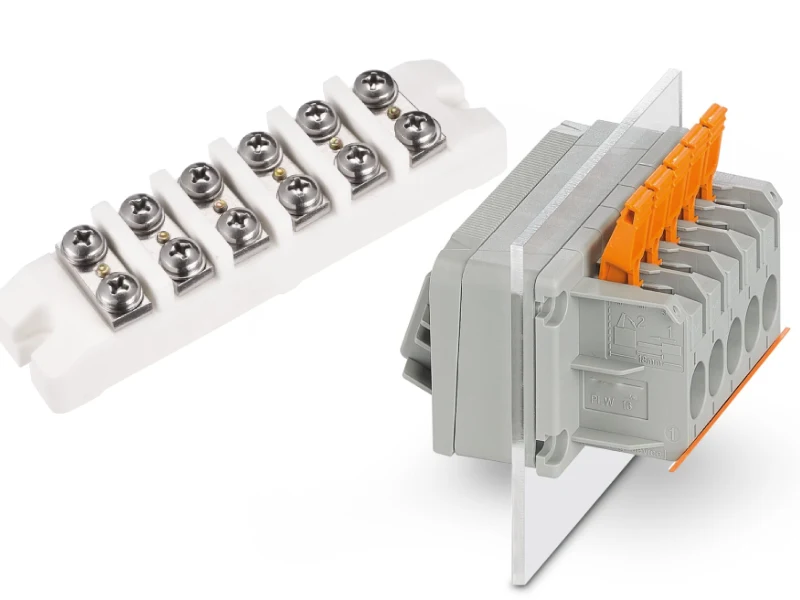Overwhelmed by a tangle of cables? You’re not alone. Messy wires are more than just an eyesore; they’re a tripping hazard, a dust collector, and can even hinder the performance of your valuable electronics.
Imagine a world where your cables are neatly organized, protected, and virtually invisible. This ultimate guide to cable raceways in 2025 will show you how to transform your space, improve safety, and create a sleek, professional look.
What is a Cable Raceway?
Recommended Cable Raceway
A cable raceway is a hollow channel or enclosure designed to organize, protect, and conceal electrical wiring, data cables, and power cords. Typically made from plastic, metal, or fiberglass, raceways provide a neat and safe solution for managing cables in homes, offices, and industrial settings.
They prevent tangles, reduce tripping hazards, protect cables from physical damage, dust, and moisture, and contribute to a cleaner, more professional aesthetic. Available in various shapes, sizes, and installation methods (like adhesive-backed surface mounts or corner ducts), cable raceways offer a versatile and efficient way to manage diverse cabling needs.
What is Cable Raceway Made of?
Cable raceways are constructed from a variety of materials, each offering distinct advantages for different applications and environments. The choice of material impacts the raceway’s durability, flexibility, appearance, and suitability for specific conditions like moisture or heavy use.
- Plastic (PVC): Highly common for residential and office use due to its affordability, ease of installation, and non-conductive properties. PVC raceways are often surface-mounted, can be painted to match decor, and are resistant to moisture, making them suitable for various indoor and some underground applications.
- Metal (Steel, Aluminum): Provides superior strength, durability, and electromagnetic interference (EMI) shielding, making them ideal for industrial, commercial, and outdoor settings. Types include galvanized steel (known for corrosion resistance), aluminum (lightweight and durable), and various forms of conduit (e.g., EMT, IMC, RMC) for robust cable protection.
- Fiberglass: Less common than plastic or metal, fiberglass raceways offer excellent corrosion resistance and are often used in demanding industrial or chemical environments where other materials might degrade. They are also non-conductive and lightweight.
Cable Raceway Types

Cable raceways come in various forms, each suited for specific environments and purposes. Understanding the different types helps in choosing the most effective solution for your cable management needs.
Based on Material
Cable raceways can be made from various materials to suit different environments. Metal raceways, including rigid, intermediate, electrical metallic, and flexible types, are typically used in industrial and outdoor settings due to their durability.
Galvanized steel raceways are particularly popular in commercial and industrial scenarios for their flexibility and strength. Conversely, most surface-mounted raceways are non-metallic, with PVC cable raceways being a common choice for homes or underground applications due to their non-conductive and water-resistant properties.
Based on Different Shape
Cable raceways are designed in various shapes to accommodate different cable types and installation scenarios. Corner duct cable raceways, for example, have a crown-like shape that allows for easy installation in wall corners, angles, or ceiling junctions, blending seamlessly with the architecture.
D-Line quarter-round cable raceways, shaped as a quarter circle, are ideal for neatly running cables along traditional floor edges, mimicking baseboards. J-channel cable raceways, characterized by their J-letter shape and open design, are often used under desks to discreetly hide computer or other peripheral cables, offering easy access.
Surface-mounted or Not
Surface-mounted cable raceways are designed for easy installation without needing to cut into walls, often featuring an adhesive backing for quick application in homes and offices. These raceways can be made from either metal or plastic, depending on the required durability and aesthetic.
A variety of styles support surface-mounted installation, including latching, sliding cover, and J-channel designs. Latching raceways are particularly convenient, featuring a hinged or sliding cover that allows for easy addition or removal of cables, making cable management highly flexible and accessible.
Cable Raceway Benefits
Cable raceways offer a multitude of benefits that extend beyond simple organization, significantly enhancing the safety, aesthetics, and efficiency of any space. By enclosing and directing cables, they mitigate common hazards and improve overall system performance. The key advantages include:
- Enhanced Safety: Eliminates tripping hazards from loose wires and protects against electrical shorts or fires by insulating cables.
- Improved Aesthetics: Conceals unsightly cable clutter, creating a clean, professional, and organized appearance in homes and workplaces.
- Cable Protection: Shields cables from physical damage, dust, moisture, and potential pests, extending their lifespan and reducing replacement costs.
- Easier Maintenance & Troubleshooting: Provides a clear, accessible pathway for cables, simplifying identification, maintenance, and future upgrades.
- Reduced Electromagnetic Interference (EMI): Metallic raceways can offer shielding against EMI, improving the performance and reliability of sensitive electronics.
How to Choose the Right Cable Raceway?

Choosing the right cable raceway is essential for effective and lasting cable management. It involves considering several factors to ensure the solution meets your specific needs, environment, and aesthetic preferences. A well-chosen raceway provides optimal protection and organization.
- Capacity and Size: Assess the number and diameter of cables you need to manage now, plus any future additions. Ensure the raceway’s internal dimensions can comfortably accommodate all cables without squeezing, which could damage them or hinder heat dissipation.
- Material: Consider the environment where the raceway will be installed. PVC is ideal for indoor, light-duty applications due to its flexibility and non-conductive properties. Metal (e.g., galvanized steel) offers superior durability and protection for industrial, outdoor, or high-traffic areas.
- Installation Method: Determine how the raceway will be mounted. Surface-mounted options with adhesive backing are convenient for quick, non-invasive installations in homes. Screw-mounted systems offer greater security and weight-bearing capacity, suitable for heavier cable loads or public spaces.
- Aesthetics and Design: Think about how the raceway will look in its environment. Choose a shape and color that blends seamlessly with your decor, or select a paintable raceway for a custom finish. Various styles like quarter-round or J-channel offer discreet solutions for different applications.
How to Install Cable Raceway?
Installing cable raceways effectively ensures a clean, safe, and organized cabling system. While specific steps may vary slightly based on the raceway type, these general guidelines will help you achieve a professional finish.
Step 1: Plan and Measure
Before you begin, carefully plan the route for your cables. Measure the exact length of raceway needed, accounting for corners and junctions. Mark the installation path clearly on the wall or surface to ensure a straight and aesthetically pleasing result.
Step 2: Cut Raceway to Size
Using appropriate cutting tools, such as a hacksaw for metal or special plastic cutters for PVC, precisely cut the raceway sections according to your measurements. Ensure clean edges for a professional fit and to prevent snags when inserting cables.
Step 3: Mount the Raceway Base
Depending on your raceway type, mount the base securely. For adhesive-backed raceways, simply peel and press firmly along your marked path. For screw-mounted types, pre-drill holes and use appropriate screws and anchors to fasten the base firmly to the surface.
Step 4: Insert Cables
Once the base is securely mounted, carefully lay your cables into the raceway channel. Ensure cables are not twisted or kinked. Leave a little slack at connection points to prevent tension, which can damage cables or connectors over time.
Step 5: Attach the Cover
Finally, snap or slide the raceway cover onto the base, enclosing the cables. Ensure the cover is securely fastened along its entire length. This step protects the cables and completes the tidy, organized appearance of your newly installed raceway system.
How to Cut Cable Raceway?

Cutting cable raceway accurately is crucial for a neat and professional installation. Different materials and raceway designs require specific cutting techniques and tools to ensure clean edges and a perfect fit.
Step 1: Choose the Right Tool
Select your cutting tool based on the raceway material. For plastic PVC raceways, a sharp utility knife, PVC cutter, or fine-toothed saw works well. For metal raceways, a hacksaw with a suitable blade or a miter saw with a metal-cutting blade is necessary for clean cuts.
Step 2: Measure and Mark
Precisely measure the length of raceway you need for your section. Use a pencil or marker to clearly mark the cutting line on the raceway. Double-check your measurements to avoid errors and ensure the raceway fits perfectly in its intended location.
Step 3: Secure the Raceway
For safety and precision, secure the raceway firmly before cutting. Use a clamp or vise to hold the raceway in place. This prevents the raceway from shifting during the cut, ensuring a straight line and minimizing the risk of injury.
Step 4: Make the Cut
Apply steady, even pressure with your chosen tool along the marked line. For plastic, a few passes with a utility knife may be sufficient, or use a PVC cutter for a clean snap. For metal, use consistent strokes with a hacksaw, or a miter saw with appropriate safety precautions.
Step 5: Smooth Edges (Optional)
After cutting, inspect the edges for any burrs or rough spots. For plastic, a utility knife or sandpaper can smooth the edges. For metal raceways, a file or deburring tool can remove sharp edges, preventing potential damage to cables during insertion and protecting hands during installation.
Cable Raceway Applications
Cable raceways are incredibly versatile, finding essential applications across a wide range of environments due to their ability to organize, protect, and enhance the aesthetics of cabling. They are indispensable for both simple and complex wiring needs.
- Residential Homes: Ideal for concealing TV cables, speaker wires, computer cords, and networking cables, providing a neat and clutter-free living space and preventing tripping hazards.
- Commercial Offices: Essential for managing data, power, and telecommunication cables in workstations, conference rooms, and server rooms, contributing to a professional appearance and easier IT maintenance.
- Industrial Facilities: Used to route heavy-duty power cables and control wiring for machinery and equipment, offering robust protection against physical damage and harsh environmental conditions.
- Data Centers: Crucial for organizing vast networks of fiber optic and copper data cables between servers and networking gear, ensuring efficient airflow, easy access for maintenance, and reduced signal interference.
- Retail and Hospitality: Applied to manage wiring for lighting, point-of-sale systems, security cameras, and audio-visual equipment, enhancing aesthetics and ensuring reliable operation in public-facing areas.
- Educational and Healthcare Institutions: Provides safe and organized pathways for IT infrastructure, communication systems, and specialized equipment wiring, maintaining a clean and functional environment.
Conclusion
Embracing cable raceways in 2025 means a cleaner, safer, and more efficient environment for your electronics. From enhancing aesthetics to preventing hazards, the benefits are clear for both homes and businesses. Make the smart choice for superior cable management.
Whether you’re tackling a small home project or a large-scale commercial installation, selecting the right cable raceway is crucial. Consider material, size, and installation ease to ensure a perfect fit for your specific needs and long-term satisfaction.
For reliable cable raceway solutions, consider Linkwell Electrics. As a leading supplier, Linkwell Electrics offers a wide range of wholesale cable raceways designed to meet diverse requirements, ensuring your cabling infrastructure is top-notch.






